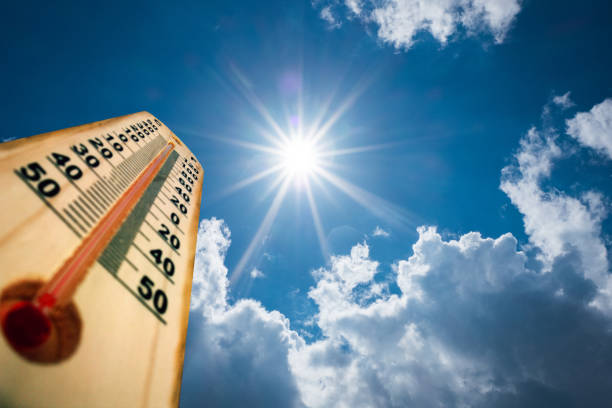Will We Survive a 2 degrees celsius World? The Devastating Effects You Need to Know!
If the Earth’s temperature rises by 2°C compared to pre-industrial levels, it will unleash profound and potentially catastrophic changes to our climate, ecosystems, and societies. The 2°C threshold is a critical point, which, according to climate scientists, represents the maximum safe limit to avoid dangerous and irreversible consequences. Exceeding this will push the planet into a much more unstable and unpredictable climate system.
Key Impacts of a 2°C Global Temperature Increase:
- Heatwaves & Extreme Weather:
One of the most immediate consequences will be an increase in the frequency, duration, and intensity of heatwaves. Areas that already experience high temperatures will become even more inhospitable. Similarly, regions that are currently moderate will experience uncomfortable and dangerous heat levels. - Rising Sea Levels:
The melting of polar ice caps and glaciers will accelerate, leading to rising sea levels. Coastal cities around the world will face severe flooding, threatening billions of people and crucial infrastructure. - Ocean Acidification & Coral Bleaching:
The oceans will continue to absorb more carbon dioxide, leading to acidification. This will threaten marine life, particularly coral reefs, which will undergo massive bleaching events, destroying biodiversity and impacting fisheries. - Agricultural Impact:
Global food production will face disruptions. Crops will be hit by extreme weather, reduced water availability, and altered growing seasons, leading to food insecurity for millions. The rise in temperatures will make some regions unproductive for agriculture. - Biodiversity Loss:
Habitats will change or disappear, and species that cannot adapt quickly enough will face extinction. This will cause cascading effects on ecosystems and the services they provide, such as pollination, water filtration, and carbon sequestration. - Health Risks:
Higher temperatures will lead to more frequent heat-related illnesses, vector-borne diseases (such as malaria, dengue, and Zika), and poor air quality. People in densely populated cities will be particularly vulnerable.
Regional Impacts and Temperature Projections:
North America:
- Washington, D.C. (USA): A 2°C increase would push temperatures during summer months to over 35-38°C (95-100°F), leading to more frequent and intense heatwaves. The Chesapeake Bay could face increased flooding due to sea-level rise.
- Mexico City (Mexico): The city could see its average summer temperatures rise to 28-30°C (82-86°F), making conditions increasingly oppressive. Mexico’s agricultural production, particularly corn, will suffer from droughts.
South America:
- Brasília (Brazil): With a 2°C rise, the capital will face more intense dry spells and higher average temperatures of 29-31°C (84-88°F), which will threaten the Amazon rainforest and lead to even greater deforestation.
- Buenos Aires (Argentina): Average temperatures during summer could rise to 33-35°C (91-95°F), increasing the likelihood of devastating droughts, particularly in the Pampas region, which would severely impact agriculture.
Europe:
- London (UK): London’s temperatures could increase to 30°C (86°F) during summer, a significant rise from its current average of 22-24°C (72-75°F). Heavy rains would become more frequent, increasing the risk of flooding and the collapse of infrastructure.
- Paris (France): Summer highs could rise to 38-40°C (100-104°F), pushing the city into extreme heatwave territory. The Seine could overflow, and water shortages would affect daily life.
Africa:
- Cairo (Egypt): A 2°C rise would bring average summer temperatures to 38-40°C (100-104°F), with heatwaves reaching well over 45°C (113°F), exacerbating desertification and creating water scarcity in the Nile Delta region.
- Nairobi (Kenya): With a rise to 27-29°C (81-84°F), droughts would devastate agriculture and access to fresh water, particularly threatening food security for millions in East Africa.
Asia:
- New Delhi (India): The Indian capital will experience summer temperatures up to 45-47°C (113-116°F), endangering health, causing water shortages, and increasing the risk of crop failure, particularly wheat and rice.
- Beijing (China): Beijing’s temperature could rise to 35-37°C (95-99°F) during summer, leading to dangerous levels of heat, reduced crop yields, and frequent urban flooding due to heavy rains.
- Tokyo (Japan): Tokyo’s summer temperatures could reach 35-37°C (95-99°F), accompanied by increased typhoons, threatening infrastructure and food production.
Oceania:
- Sydney (Australia): The Australian coastal city could experience longer and more intense heatwaves, with summer temperatures reaching 35-38°C (95-100°F), pushing the risk of wildfires even higher and impacting agriculture, particularly the wine industry.
- Wellington (New Zealand): Temperature increases would be moderate compared to the northern hemisphere, but 25-27°C (77-81°F) would still be felt more intensely, leading to longer droughts and disruptions in ecosystems.
Global Scenario:
- Heatwaves will be a regular occurrence, especially in tropical and subtropical regions.
- Agriculture will face major setbacks as temperatures rise, crops suffer from droughts, and new pests emerge, leading to reduced yields.
- Water Resources will dwindle due to less rainfall and higher evaporation rates, especially in regions already facing water scarcity.
- Human Migration will intensify as climate refugees flee from coastal regions and agricultural areas hit by droughts and heatwaves.
Conclusion:
A 2°C rise in global temperatures is a scenario where the very fabric of life on Earth would be tested. While some regions will experience warmer and drier conditions, others will face catastrophic flooding, severe weather events, and loss of biodiversity. Coastal cities will be under constant threat from rising seas, while agricultural production will be strained to the breaking point, making food security a critical issue. It is imperative for countries to take immediate and robust action to mitigate greenhouse gas emissions and prepare for the impact of climate change to avoid crossing this dangerous threshold.




